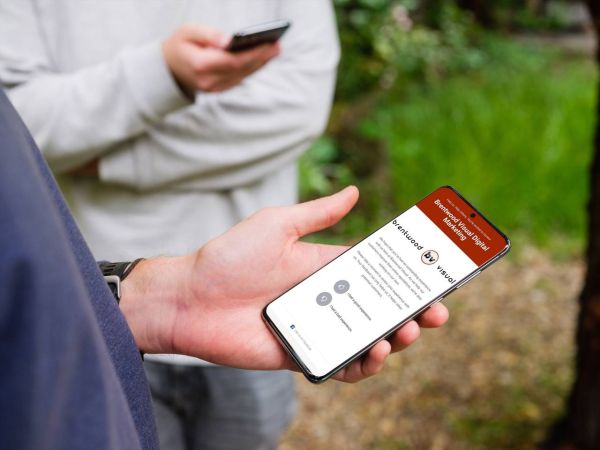
Understanding Email: The Ins and Outs of Accessing Your Business Email Account
Understanding Email: The Ins and Outs of Accessing Your Business Email Account
If you're in business, email is a part of your daily life. But for as much as we use it, most people don't understand the technical "mysteries" behind their email address. As a result, many people stick with the free accounts such as Hotmail or Gmail, even though these aren't as professional as an email account that includes your domain name. Understanding the basics of account types and how to access your email can give you the confidence to make the switch to domain-based email, as well as make a huge difference in the way you interact with your email account and speeding up your daily workflow.
In this article, we'll explain the most common types of email accounts and multiple options to access them from your computer or mobile device.
How does email get to me?
When somebody sends you a message, that message is delivered to your email server, which is either a part of your website server or a standalone system that is dedicated to handling your email. An incoming message (after passing sender authentication, spam testing, and other security processes) is stored on the email server. Once it's there, you have multiple options to access the server and retrieve the message.
How do I check my email?
There are a number of ways to check your email. You can use a webmail client, an email client or an app. At the technical level, they're all doing the same thing: providing an interface to access the messages stored on your email server.
Webmail is easy to use but usually does not provide the same level of functionality as email clients or apps. If you are using this method, you will have to visit the site and login each time you want to read your messages. The webmail site provides a software interface to view and manage the messages on your server. (Gmail is an example of a webmail interface.)
Email clients allow for more power and flexibility; however, some initial setup is required before they will work properly with your server. You'll need to set up an account through the program and connect it to your server. Depending on the software and email server you're using, this may require multiple steps. (If you're using a Brentwood Visual server, the information you'll need to configure this is located on our support website.) Email clients also make managing multiple accounts much easier than using webmail: you can connect multiple accounts from different providers. For instance, my email client has multiple domain-based business accounts, personal accounts, some client-specific accounts, and multiple Gmail addresses all coming together in one inbox for easy management.
Apps are a third option. While they fall under a slightly different name, apps are essentially email clients for your phone or tablet. They share many of the same features, including the ability to host multiple email accounts from your device.
Connection Protocols
When your email software connects to the server, it uses a digital communication language known as a protocol. Webmail apps use the IMAP protocol and are configured by default. When using an email client or an app you can choose between POP3 or IMAP. Here's a primer to help you understand the differences.
POP3
POP3 is a protocol for retrieving email from an email server: think of this as a download protocol. It stands for Post Office Protocol 3 and was once the most common way to retrieve email from an email server. POP3 is an older standard, but it's still used today by many people who want to download mail from the server and keep it exclusively on their own computer. Once downloaded, messages are removed from the server; this works well if you only use one device and don't want messages showing up on multiple devices.
POP3 isn't ideal for people who need coordination between different devices or platforms (for example, checking your mail from both a desktop computer and a mobile device) because it doesn't allow for that kind of coordination; instead, each device will download new emails individually whenever they're connected to Wi-Fi or cellular networks. Each device will then show the messages it downloaded, but since they're removed from the server after download your other devices can't access them.
IMAP
The IMAP protocol allows you to access your email from multiple devices: think of this as a synchronization protocol. This means that if you get a message on your desktop PC, and then later open the same message on your mobile device, all of the changes will be synced between those two devices since the "master copy" is still stored on the email server.
IMAP's primary benefit is that it allows you to use any device connected to the internet—from anywhere—to manage messages without having to download them each time. Since the changes you make on each device are synchronized to the server, it's easy to to use multiple devices to manage your account. If you reply to a message from your phone, that reply will be available in Sent Items on your desktop. If you delete a message via your desktop email client, it will disappear from the inboxes on your webmail and mobile email apps.
SMTP
SMTP is the protocol used to send email between servers. Every mail server has an SMTP port, which is typically 25 (though it can be changed) and is used to relay messages from one machine to another.
You'll configure an SMTP server in your email client regardless of whether you're using POP3 or IMAP as your primary protocol because all accounts use SMTP for sending messages out into the world—it’s just a matter of whether or not they require authentication credentials when connecting to their respective servers.
Exchange and Gmail
Microsoft and Google both offer their own popular email services. Exchange is widely used in the business world — because of Microsoft's promotion of their platform, and because of the integration it offers with other Microsoft services like Calendar and Office software. In a large corporate environment this can be a major plus. Because of the widespread adoption of the Exchange platform, most email clients and apps have some sort of support for Exchange accounts. Exchange is a paid service, with most hosted systems offering a per-account monthly or annual charge.
Google provides their own service known as Gmail. The free version of Gmail is popular with personal and business users alike. For business users, Google offers their Google Workspace platform, which integrates the features of Gmail with a domain-based email account (like
What's the best choice for me?
When it comes to choosing the right email approach for you and your business, there are two main options: webmail or an email client.
- Webmail is accessed through a web browser, so it's easy to use on any device. The webmail application is preconfigured to access your account. Since you can use any web browser, this can be a great option for people who use multiple computers at work or need to access their mail from a hotel business center or other one-time access.
- Email clients are more powerful than webmail in most ways, but they require more initial setup time before they're ready for everyday use. Once installed they offer real-time access to your messages from a powerful, local interface, easing the friction of having to visit a website and login each time you want to read your mail.
We hope this article has helped you understand the ins and outs of accessing your email account. Whether you choose to use a webmail or desktop client, POP3 or IMAP, SMTP or Exchange or Gmail — the choice is up to you!
For Brentwood Visual hosting clients, POP3 and IMAP access (as well as your outgoing SMTP server) are included in the hosting package for our Basic and Advanced plans. Webmail access is easily accessible via your domain name. Starter package clients can add this service for a small monthly charge. Upgraded accounts like our Business Email or Exchange platforms are also available, with higher storage limits and advanced webmail applications.
If you have any questions about accessing or using your email accounts, we're here to help! Feel free to email our support team, or access self-help resources via our support site.



